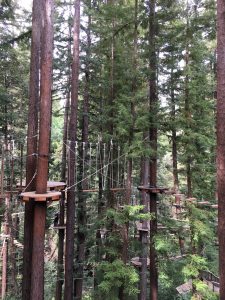Over the past four days there has been a clear message that Peacebuilding work is anything but concrete. This work involves dynamic and diverse scenarios, and, of course, people who have varying interests and needs. Situations in need of conflict resolution and/or development are, therefore, fluid and require regular reassessment. This includes monitoring one’s own awareness of learnings, attitudes and actions.
In this blog I created a list of questions that will certainly expand throughout the course. This first iteration is helpful to me in considering how I would assess a situation before creating a strategy. As our course progresses, I hope a list of questions will also emerge that is helpful to discerning strategy. Instructor’s names are included to make a connection with specific session content, recognizing that some questions (e.g., those about personal attitude and bias) run through every stage of this work.
What is my emotional response to the situation (Stoffers, Iyer)?
What are my current attitudes and behaviors about the matter?
What assumptions need to be questioned?
Who is driving the conversation generally?
If there is funding, where is it coming from and what are the interests and needs of that group (Iyer)?
Does the objective need to be reconsidered (Glenzer, on double loop thinking)?
What are the needs and the interests of all parties and is this a matter of dispute or conflict (Iyer and Rubenstein)?
What is the potential for violence?
What is the bias in the system and how is it violently expressed (or as said by Professor Rubenstein, “Is there a system producing a conflict and can that be changed?”)?
What is the context?
What are the critical points of historical memory (Glenzer)?
What is the environmental involvement or impact (Matthews)?
What is the human toll in this situation?
What is current praxis; ie., what is the intersection of theory and practice (Glenzer)?
If doing structural change, how much change may be possible given the reality of hegemony (Glenzer)?
Where is the best sphere of influence if wanting/needing to transform the structure?
Is there mutual recognition and respect for identity and existence among parties?
What conflict resolution and development efforts have already occurred?
What is the capacity to develop the local ingenuity (Matthews)?
What is the time frame involved?
I include a photo of this ropes course at Mt. Hermon Conference in the Santa Cruz Mountains. It seems an apt metaphor for the complexity of the world’s problems and the processes required for discerning just and workable solutions. Indeed, the human community must work together with cooperation and collaboration, truly caring for one another and the planet.


